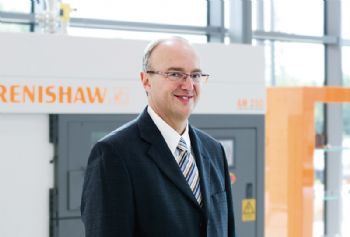
Renishaw (
www.renishaw.com) is contributing its additive manufacturing expertise to a new £17.7 million project, being led by Airbus in the UK, to develop an innovative way of designing and manufacturing aircraft wings that will “encourage a ‘right first time’ approach” and reduce development times.
The project, called Wing Design Methodology Validation — or WINDY — has been made possible thanks to joint industry and UK government investment from the Department for Business, Energy and Industrial Strategy (BEIS), supported by the Aerospace Technology Institute (ATI). It was one of a number of projects announced by BEIS during the Farnborough International Airshow.
Airbus chief operating officer Tom Williams said: “Aircraft wing design is a hugely complicated process. This project will look at ways we can increase the robustness of the design and test process, while also reducing the time this takes. Developing ‘state of the art’ technology will be at the heart of achieving these improvements, and this investment is vital for that.”
The project will be led by a team from Airbus in Filton (Bristol), which is a global centre of excellence for wing design, development and testing. As a key partner, Renishaw will provide its expertise in metal additive manufacturing (AM) and precision measurement.
Clive Martell (pictured), Renishaw’s head of global additive manufacturing, said: “This is a fantastic opportunity to work with Airbus and other project partners to develop processes that will fully test the capabilities of additive manufacturing. If we can highlight the design and production benefits of this technology in one of the most demanding industry sectors, then it paves the way for greater adoption of AM for serialised production in many other applications.”
WINDY will look at aerodynamic modelling of wings, the potential for using complex additive-manufactured (3-D printed) components in wing structures, and the possibility of innovative control mechanisms for better efficiency in flight.
Simon Weeks, chief technology officer of the Aerospace Technology Institute, said: “One of the key aims of the ATI’s UK national aerospace strategy is to sustain and grow the UK’s global leadership in aircraft wings. The WINDY
project is a key element of this aim, securing essential wing design and integration capabilities in the UK and opening the way to innovative 3-D printed wing components. These will lead to lighter and more-efficient wings, which will be needed for future generations of greener airliners.”
The UK aerospace industry is ‘number one’ in Europe (in terms of market share) and ‘number two’ in the world — behind the USA. It supports more than 3,000 companies across the UK, directly employing 116,000 people — 4,100 of whom are apprentices and trainees.